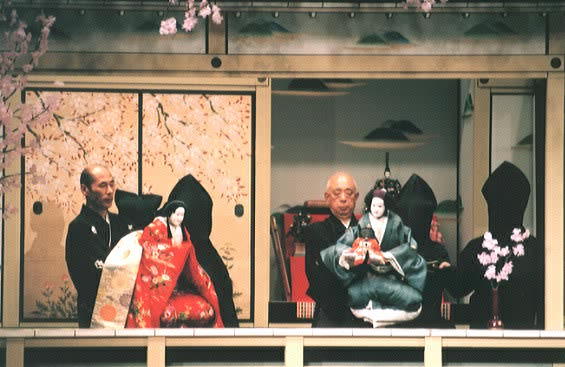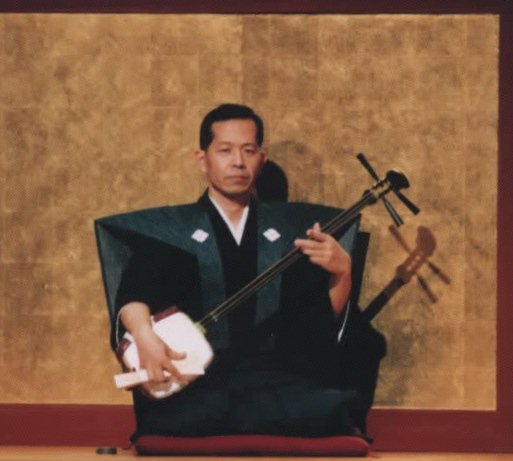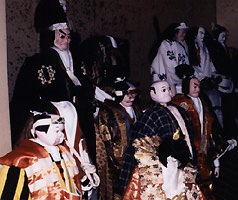Please maximize for best viewing.

Created by AMPECNet
BUNRAKU
Bunraku is the most representative form of public theatre. It originated in the 17th century. This style of Japanese drama uses puppets. Bunraku is often referred to as being a "Double Triangle" or Sangyo. It is actually a triangle within a triangle. To begin with, there are three puppeteers per puppet. The biggest triangle is made up of the puppet, singer, and the shamisen player.
A Bunraku puppet is called a gyonin. Their eyes, eyebrows, mouths, hands, and arms can move. On each gyonin the hips are made of bamboo, the arms and legs are attached by only string, and the shoulders are padded with dried gourd fiber.
Bunraku originally had one puppeteer per gyonin, but later took three when the puppets became updated and more advanced. Much skill and talent is needed to operate these "lifeless" actors. Only the main puppeteer is visible throughout the play, while the other two are covered in black outfits. They must remain "invisible" to the audience. The least talented puppeteer (ashidzukai) controls the feet. If the puppet being used is a female, then this puppeteer controls the skirt movements, due to the fact that the female puppets don't have legs. The second most experienced puppeteer (hidaridzukai) controls the left hand and helps the main puppeteer. The most experienced puppeteer (dedzukai) controls the right hand and head. Interested in being a puppeteer? Each of these positions in Bunraku puppeteering takes 10 years to master, but once this skillful art is learned the puppets look so realistic that they sometimes appear to be more emotional than humans!
The singer/narrator, called a tayu, recites all the lines (joruri) of the puppets and sings special songs called gidayu bushi. He basically tells the story throughout the show. These songs are sung using a breathing technique which involves inhaling from the belly instead of the chest. This is because of the length of a performance and the amount of breath needed.
The last part of the Bunraku drama triangle is the shamisen player. A shamisen is an ancient Japanese guitar-like instrument. It can be used to create both sound effects and meditative music. Both the shamisen player and the tayu wear the traditional kamishimo dress, and they site on an elevated platform on the right side of the stage.
Most Bunraku plays were classics from the 18th century. About 50 new plays have been presented after WWII, but most of them are not likely to be staged again, unlike the classics, which will continue to be performed consistantly. The Japanese Government supports Bunraku Theater, seeing as it is an important cultural tradition. In 1984 the National Bunraku Theatre was established in Osaka, the birthplace of Bunraku. At this theatre six series of Bunraku performances, each lasting about two weeks, are scheduled to be held every year.
Pictures of Bunraku


Bunraku Puppets Bunraku theater in Osaka, Japan

Right hand of Gyonin

Bunraku stage

Scene from "Kanatehon Chushingura"

Bunraku in action! Notice the two "less trained" gyonin manipulators. They are wearing black.

A Shamisen Player

Puppets...
This is site is complete property of AMPECNet™ under the division of Saruniku Systems™...blah blah blah. Copy anything on here and die.
® All Rights Reserved Copyright ©1999 By AMPECNet